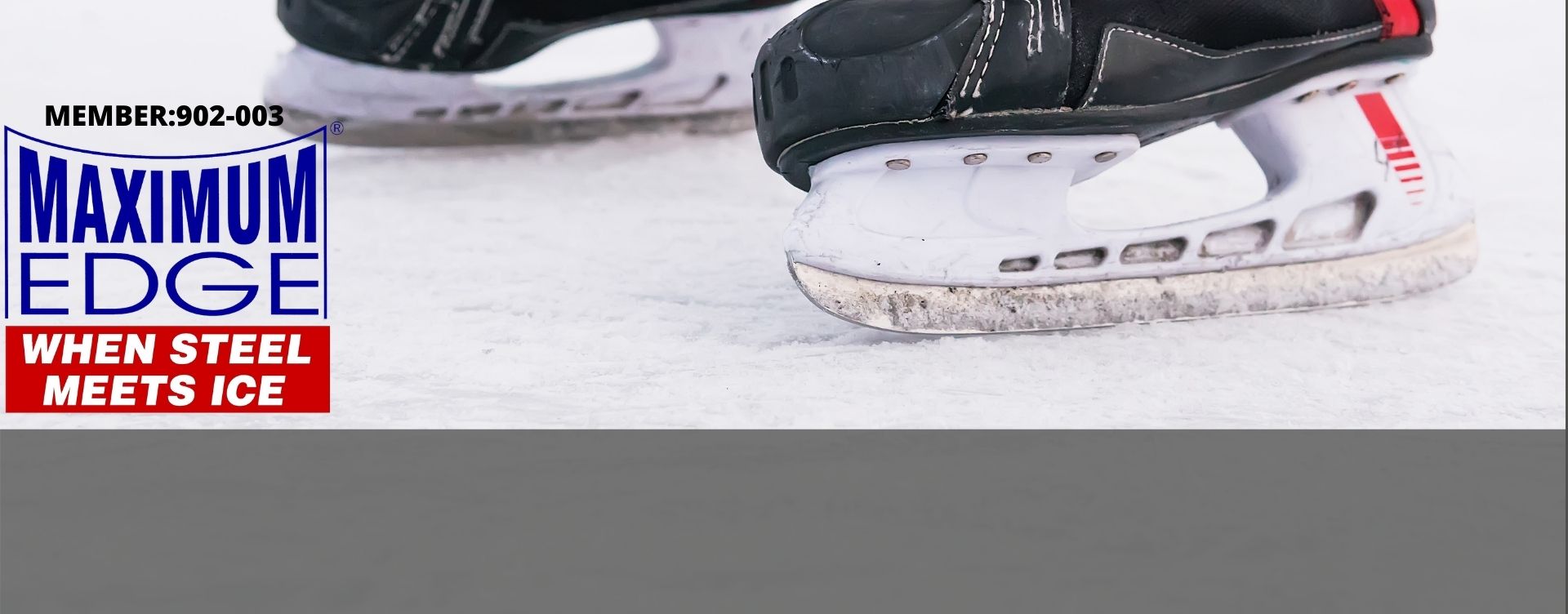
Professional Skate Sharpening
Worn, poorly sharpened and maintained blades are more difficult to sharpen and do not perform well. Poorly sharpened blades have a shorter useful life and can last half as long as a properly maintained and sharpened blade. A good profile with a proper radius (hollow depth of blade) allows the blade to work for the skater, not against allowing them to skate on top of the ice not in it. A clean accurate radius produces equal bite angles, improving a skaters' confidence in the blade, reducing body compensation leading to less skater fatigue. Click to check out the Official Maximum Edge website.

What happens with bad blades?
Poor quality, rusted or improperly sharpened or heated blades are much weaker than properly sharpened blades. Overheating a blade can leave the steel with the same strength as a soup can and affect steel even below the sharpening surface. Weak edges wear down quickly and are prone to breaking off leaving a false edge. Some skate sharpeners try to solve this problem by sharpening with a deeper radius but this compounds the problem. A deeper hollow gives the skater an edge but this leads to the skate being stuck deeper in the ice. This reduces skater control, increases fatigue and increase wear and tear on the players joints possibly shortening their playing career.

What is Skate Profiling?
Profiling is the matching of skate blades to each other and to the skater. The shape of the blade should be a constant radius surface and blade heights equal for proper pitch. Maximum edge that all hockey skates should be profiled once a year and profile maintenance done after 10 or 12 sharpenings. A skate sharpener who uses proper technique and pressure .may slightly alter the profile of the blade but one improper sharpening will immediately change the profile. Its important to understand that the contact area of the blade profile determines the skater's centre of gravity which ultimately affects control and performance.




